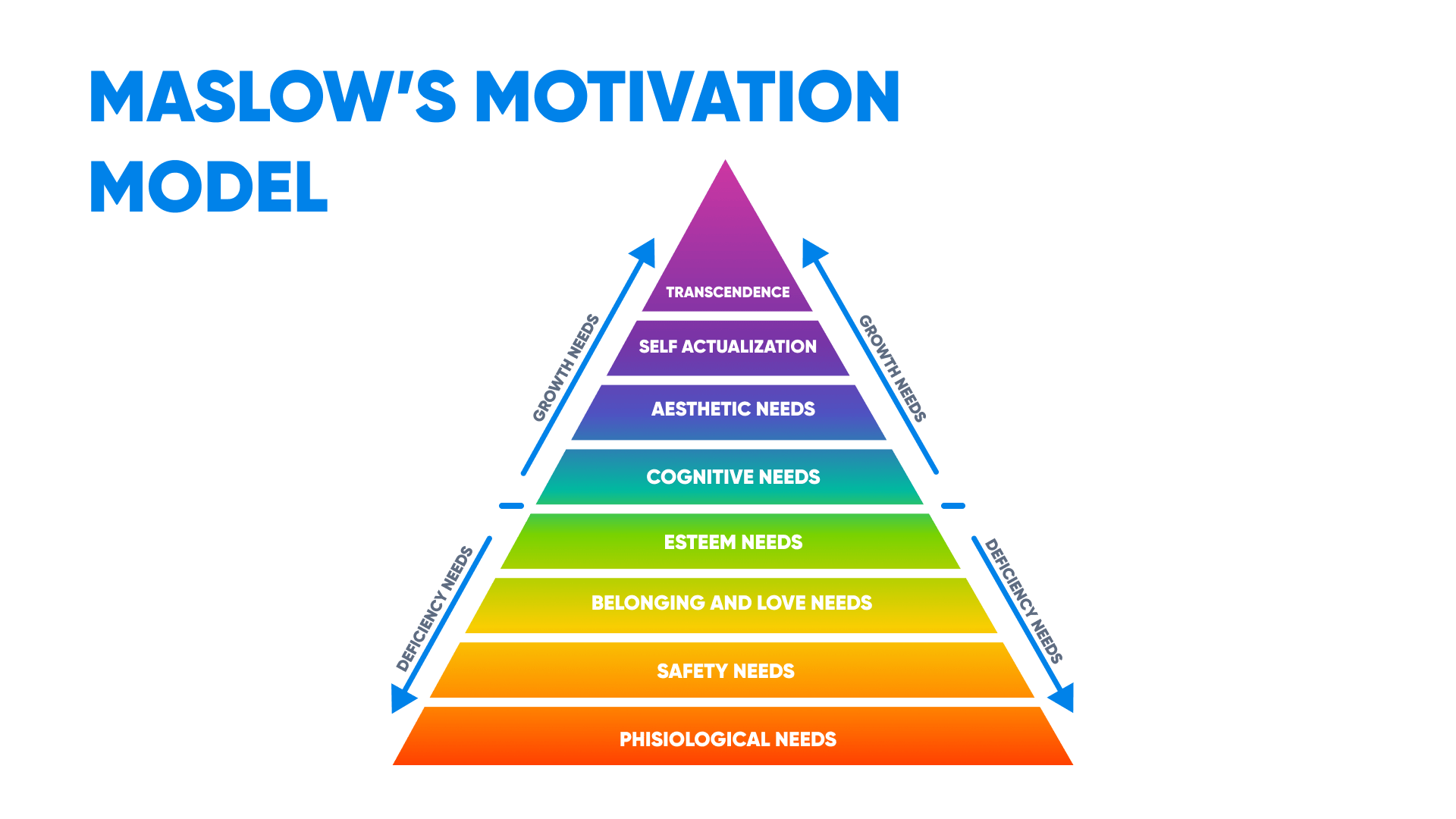
Have you ever wondered how important motivation is for outsourcing teams? Not those people in the office from 9 to 5, but for remote employees who might have never seen their teammates. According to statistics, almost 300,000 jobs are given to outsourcing every year in the US alone.
The relationship between an employee and a customer covers not only the project’s quantitative indicators (KPIs) but also the level of employee retention. There is even more, as there is also the third figure: software development service providers. Considering the complicated nature of these relationships, the question arises: How hard is it to be motivated when working on foreign premises? What makes employees feel motivated (except rewards, obviously) when not being a part of the in-house team?
We interviewed our team to find out the truth and compile a short list of tips that may come in handy for both employees and companies that are part of the outstaff triangle.
Global employees wellbeing market: takeaways
“A company’s employees are its greatest asset and your people are your product.”, said Richard Branson.
This quote is of particular importance for companies where employees should maintain work loyalty, regardless of being an external part of the in-house team. On a daily basis, they face a wide range of problems that might prevent them from developing the sufficient level of motivation required in their daily work. The first and most obvious is the lack of integrity with the customer.
It looks like that’s the case, even with a typical employee-customer relationship, as in the globalized world where people are ever more rarely looking for a job in their domestic areas. Statista says in 2022 there were estimated to be approximately 3.32 billion people employed worldwide, compared with 2.28 billion people in 1991.
The outstaff model creates a triangle between customer, employee, and software developer. Within this figure, an outstaff worker may experience various inconveniences: from practical difficulties of such cooperation to some ethical concerns. Someone may be delusional thinking that the outstaff team not only profits to the organization they don’t belong to but also works on the success of the foreign county. It remains one of the most controversial points when it comes to software development.

However, it is no more than a myth as, in fact, it was proved that outsourcing leads to a significant increase in the global rate of the country. The software provider is also becoming more economically productive, which in general plays in the hands of both the company’s image and the economy of the country.
The other point that may demotivate the outstaff worker is the concerns about the quality of provided services. However, in addition to its cost-efficiency, companies report they continue to opt for outsourcing as it brings a 31% improvement in the quality of their services. Another 78% of businesses indicate a positive relationship with outsourcing partners.
But sometimes both customers and software providers omit the fact that the main guarantee of these success indicators is employee motivation and loyalty to the project.
Where does this feeling come from?
The roots of team motivation
A true sense of loyalty and a sense of belonging to the company emerges through an understanding of the importance and value of one’s work. Well engaged employees improve business profitability by 21%. Meanwhile, more than 450 billion dollars of losses related to the lack of motivation of employees are recorded every year in the USA alone. Numerous studies prove that engaged and motivated employees are not only passionate about their work but also usually take on more challenging tasks voluntarily.
Gallup’s study says adequate employee motivation also improves workplace retention. That’s why for many years, experts have been conducting research on the actual reasons that affect the motivation of employees.
One of the most widely accepted theories is based on Maslow’s hierarchy of needs. Maslow’s theory of motivation includes five levels of human needs: physiological needs, needs for safety, needs for love and belonging, esteem, and self-actualization. All these problems form a pyramid, where at the bottom are basic needs. Only by satisfying some trivial needs, you can find the necessary motivation to move to another level.
Based on this logic, to get a motivated employee, you should first take they are provided with the following needs at the workplace:
- Physiological needs (availability of food, housing, a sufficient level of sleep, medical assistance)
- Physical and emotional safety (healthy and supportive workplace atmosphere)
- Love and sense of belonging (loyalty to the workplace)
- Respect (recognition of the employees’ achievements and their contribution to the success of a particular organization)
- Self-actualization (meeting the need for growth)

Despite the complex nature of employee-management relations, this pyramid and other attributes of employee/ employer relationships are just as relevant in an outstaff model.
How to manage an outstaff team through motivation: tips for developers, QAs and other members

In an ideal scenario, a software development team consists of the top talents on the market. In addition to highly skilled developers, it may also include:
- Quality Assurance specialists (QAs)
- UI/UX designers
- Graphic designers
- Project manager (PM)
- Business analytics and other specialists
In theory, to build a successful relationship in the outstaff triangle, one simply should follow the rules of healthy relationships between an employee and a client. However, outstaff players are in a unique position because they have two management teams. To charge their teams for success, both customers and outstaff providers should observe the following recommendations.
Ensure transparency and timely reporting
Clear and transparent processes are an integral part of the project for both developers and QA engineers. Daily reports that reflect the current stage of the process help specialists in the team to have a clear picture of the project volumes and help to plan their workload accordingly. In addition, regular reports that demonstrate the team’s daily progress and achievements are a great motivation tool to inspire specialists to reach out for more results during the project.
In turn, an outstaff provider can also provide employees with regular feedback on their performance and be interested in their success in all ways. In the end, employee progress is the greatest indicator of their professional work and the guarantee of their services.
Foster discussions with three parties
To start successfully, customers are recommended to take care that there is a sufficient level of communication inside the team. Even a short meeting with developers, business analysts, and product managers at the beginning of the development cycle can save a lot of time in the process. The structured team discussion brings a clear vision of the next steps to the table. The agenda of these meetings may include project results, feedback from a customer, testing details, and product history. This helps the QA team to gain some extra time to thoroughly test cases or software issues. The transparency in these moments accelerates the testing process in such a way that developers have some extra time to fix any defects and feel more confident in their work.
Daily meetings can be supplemented by weekly and monthly meetings with an outstaff provider. They may have a broader agenda including the discussions of milestones, progress, and expectations of the team. In an ideal scenario, they also include the part with congratulations and praise of the high performers. These short meetings foster an atmosphere of team unity where everyone knows they strive to reach the same goals.
Avoid bureaucracy
Studies reveal that 22% of people consider bureaucracy one of the most demotivating factors at work. This phenomenon is also an acknowledged enemy of creativity and innovation. The solution is to plan accordingly. Make sure the agenda of every team meeting with customers is detailed, concise, and to the point. Make sure the team is aware of all the necessary documentation that needs to be prepared for the planned discussion. Each meeting should end with a clearly defined action plan, which each participant can later receive in writing form. This can be a great way to motivate the team as meetings focus on project relevance, team collaboration, and problem-solving.
Practice one-to-one meetings with the team members
The road to team motivation begins with individual conversations. Each quarter, save some time to discuss performance goals and progress with each individual on your team. During meetings, you can learn about the nuances of their work: factors that motivate or demotivate them. Employees are the first source of truth to learn whether things work in the team.
Include gratitude into work
Gratitude is a simple thing. Every member of the triangle makes an equal contribution to their career or business. When offering a job, the customer should not forget that the employee generously pays back by sharing their expertise in exchange.
Similarly, in the outstaffing, each party should save time to value each other’s contribution in the process. Working for a company in a foreign country, people often find themselves in a difficult situation, applying extra effort to succeed in the workplace. In this regard, many wonderful stories are mentioned, when the customer personally visited their outsource team and thanked them for excellent results.
This is a great practice, employees who feel themselves appreciated in this team have more motivation to stay with this customer. If there is no possibility of personal visits, that’s not a problem. We live in a globalized world, thus, thank-you letters or a call with the team can be a great alternative.

The current generation of talent is taking motivation very seriously, and see it for a complex phenomenon that it is. The benefits of providing this motivation are immense for the project, helping to replicate the success-oriented mindset of a unicorn startup. When searching for an outstaff team, it pays off to remember it’s a three-way interaction, and choose wisely. MWDN has learned this lesson, ensuring it’s an underlying factor for success when it comes to working on your project.
